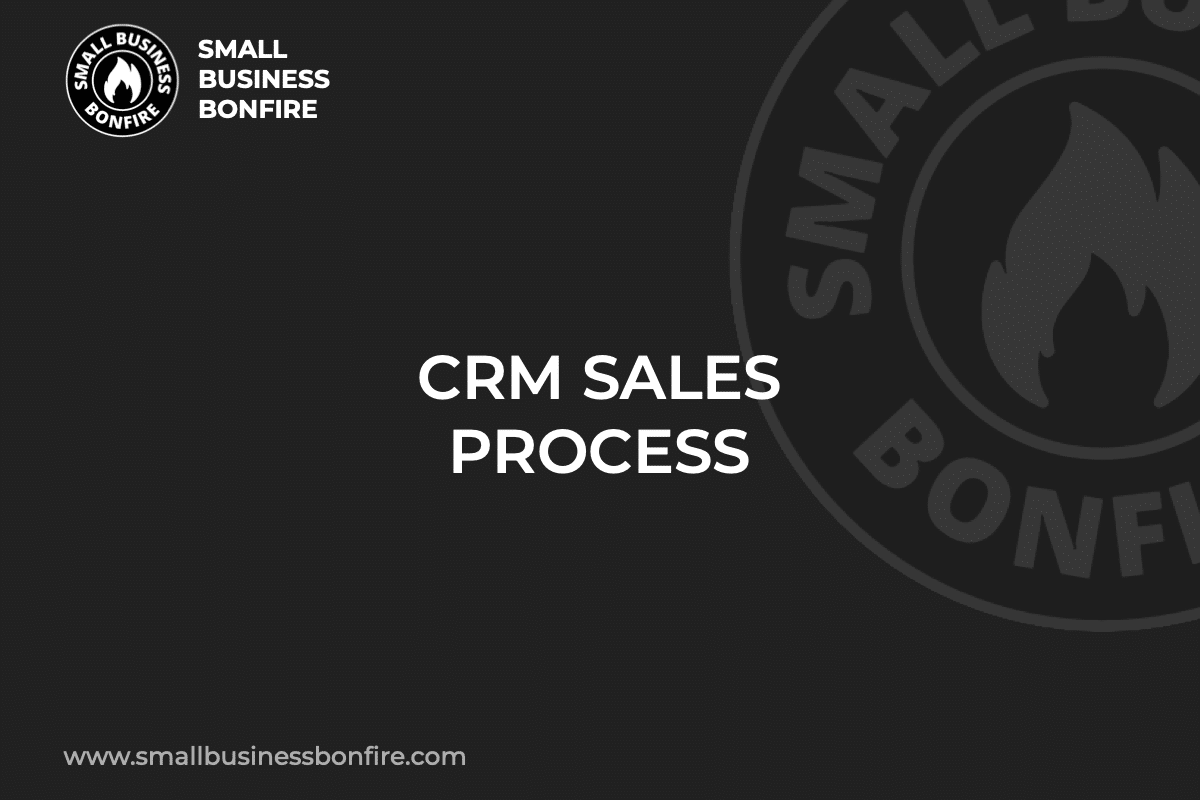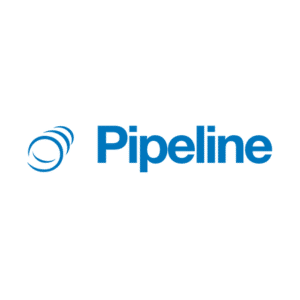Has your company recently implemented a CRM system to boost sales and increase revenue? Customer relationship management software is an excellent investment.
But perhaps you’re having difficulty using CRM data to build a structured sales process.
Hi! I’m AJ, and I’ve been using CRM programs for several years. As a result, I was able to scale and sell my digital agency for multiple seven figures.
After years of using CRM systems in my companies, I compiled this guide to help small business owners develop a successful sales strategy.
What is a CRM sales process? Let’s dive into things and find out!
Key Takeaways
- A CRM sales process is vital because it provides a comprehensive picture of your potential and existing customers, ensuring your team offers a personalized experience.
- You must continue nurturing customers after your sales reps close a deal because it leads to loyal clients and repeat sales.
- CRMs help you increase qualified leads, boost conversions, and streamline repeatable processes within your selling process.
- Tweaking your sales process is a never-ending project. As your business and industry change, so should the way you're selling to customers!
Related Reading: CRM for Small Businesses
SBB Featured Partners
What is a CRM Sales Process?
A CRM sales process is a set of steps your sales team follows to complete the sales cycle.
The process ensures your sales reps take the necessary steps to convert leads into paying customers.
For several reasons, CRM sales processes are essential for your business (I’ll get to those in the next section).
Your CRM software utilizes customer data, allowing sales agents to provide a personalized experience and a smooth selling process.
To put it simply, a CRM sales process enables your sales department to manage and improve the customer experience and satisfaction rates.
Why is a CRM Sales Process Essential?
Sales CRM systems provide efficient tools for sales teams, regardless of your company size.
Therefore, a CRM sales process is critical to improve sales and bring your business to the next level.
Below I’ve compiled some reasons CRM sales processes are a must-have if you’re a business owner!
Deeper Understanding of Your Prospects
A clearly defined sales process gives sales reps a comprehensive picture of the buyer persona and ideal customer profile for prospective buyers.
With this information, sales teams know the type of person they should pitch to.
As a result, your team doesn’t waste time pursuing every lead they encounter. Instead, they only seek clients that match the buyer profile.
Increased Qualified Leads
Now that your sales reps can quickly determine which potential customers are least likely to purchase your products or services, they can engage with the right prospects!
Not only do more qualified leads improve your sales, but it also reduces the sales cycle.
Therefore, your employees work efficiently because they don’t waste time chasing dead leads.
Increased Conversions
When your team targets customers likely to purchase your products and services because they align with their interests, conversion rates improve.
A conversion is when your salespeople turn a potential customer into a paying one.
Of course, the more conversions your sales team completes, the more sales your company enjoys!
More Repeatable Processes
A sales process provides clear steps for your team to follow.
And with practice, these repeatable steps become ingrained in your sales teams’ minds.
Although the process may take time to understand and implement, repeatable steps ensure everyone is on the same page and knows what to expect.
The first time I introduced sales stages and processes to my team, it took longer to progress through the sales pipeline.
However, after repeating identical steps daily, my sales teams’ productivity increased by over 75%!
Better Understanding of Sales Goals
When you give them a clear-cut process, sales reps understand their goals and objectives.
When employees know what they are working towards, it helps increase motivation and enthusiasm to hit the targets.
Additionally, if someone on your team is underperforming, you can quickly identify any areas of improvement without any guesswork!
Better Understanding Sales Bottlenecks
Each sales rep in your company must be accountable for following the steps in the sales funnel and taking customers through that journey.
A sales process offers information about stalled deals, including what deals are stuck, when they initially occurred, and how they happened.
Therefore, you and your sales managers can identify bottlenecks and develop strategies to handle them effectively.
Improved Customer Service
Understanding each stage of the sales process allows your reps to provide better customer service and more personalized services.
CRM software provides vital customer information about each client’s preferences, buying habits, etc.
Therefore, when your team knows how a potential customer behaves throughout the sales journey, they can implement strategies that are more likely to secure a sale!
Lower Cost to Acquire a Customer
By streamlining the sales process, your team can focus on potential customers most likely to buy your products and services.
Therefore, you spend less money and resources acquiring new clients because you aren’t wasting time with leads that won’t convert.
Spending less money per customer means increasing sales and revenue for your company!
CRM Sales Process in Seven Steps
Now that you understand the benefits of a streamlined sales pipeline, it’s time to learn how to implement one in your company!
That said, there are seven steps to a sales process, including the following:
- Prospecting
- Qualification
- Demonstration
- Quoting
- Negotiation
- Closing
- Nurturing
Let’s look at these steps in-depth, ensuring you understand how these processes work!
Step 1: Customer Prospecting
The first stage of the sales process is searching for new customers.
It is best to create a buyer persona and ideal customer profile to find prospects most likely to buy your products and services.
Observe your company’s sales history and note the types of customers who previously purchased things from you.
Are there any patterns? Did customers respond to a specific pain point?
Once you identify the best strategies for prospecting, create a document for your sales representatives to follow.
Step 2: Customer Qualifying
The next stage is determining which prospects will most likely need or want your company’s products.
Therefore, representatives should conduct a discovery call, asking questions such as:
- Is your budget compatible with our products/services?
- What are the decision-making processes in your company?
- How are you currently handling the challenge our product can solve?
These questions (and others) determine whether your prospect is sales-ready.
If a prospect fits your criteria, a sales representative can move on to the next stage. If not, it’s critical to rethink pursuing the client to ensure they don’t clog your sales funnel.
Step 3: Demonstration
After determining whether a prospect is qualified for a potential sale, you must demonstrate why your product or service is better than your competitors.
Depending on your company’s expertise, an agent can schedule a call and explain the features of your product or service and focus on how it will help the client overcome their challenge.
On the other hand, social media is an excellent tool to demonstrate your products and services features and functionality without calling each customer.
Instead, marketing teams can create content on a widespread scale and potentially secure more sales opportunities.
Step 4: Customer Quoting
The fourth step is pretty simple. At this point, your agents must provide the potential customer with a quote for your products or services.
The quote can vary based on certain factors depending on your business offers.
Other times, everyone receives the same price point.
Fortunately, most CRMs can create professional templates for sales quotes, which is one of several time-consuming tasks the software can do for you!
Step 5: Customer Negotiation
Occasionally, customers try to negotiate the quote a sales rep presents.
Again, it’s up to you as a boss whether you accept negotiations.
I’ve found that negotiating can lead to stronger customer relationships and more long-term clients.
One thing to ensure about any negotiation is that you aren’t losing money on a deal to make a customer happy.
Step 6: Customer Closing
Closing a sale means your team has successfully turned a prospect into a paying customer!
Sometimes, this stage demands contract signing, service level agreements, and payment negotiations.
Still, closing deals means your sales team did its job effectively, and that’s something worth celebrating!
Step 7: Customer Nurturing
Although it may seem like closing a deal is the final step in the sales process, nurturing is!
Customer nurturing is a step I’ve seen several companies forget about or disregard completely.
However, nurturing builds customer loyalty and encourages customers to return to your business because people are more likely to buy products and services from a company multiple times if their experience is pleasant.
Nurturing can consist of the following actions:
- Follow-up emails or phone calls asking about the customer’s satisfaction
- Surveys
- Email marketing campaigns to push additional products or services
Follow-ups ensure your customer base feels like you still remember them and that their business means a great deal to you (because it does)!
How to Build a CRM Sales Process
I’ve compiled this simple six-step process so you and your team can build your company’s unique CRM sales process!
Depending on your industry and specific business, you may need to add a couple of steps.
Still, this guide is an excellent place to start!
I’ve used these steps countless times to implement an efficient sales process, and I’m confident they will help you do the same.
Let’s take a look!
Step 1: Create CRM Sales Goals
As is true with any business process, setting goals is essential.
You and your team must identify your key performance indicators (KPIs) when setting sales goals.
KPIs are essential sales metrics that determine whether your actions are successful or lacking.
Also, setting micro-goals (monthly or quarterly) for your team helps make long-term goals easier to achieve. These goals also help your team stay motivated.
Lastly, creating results-oriented goals is more effective than activity goals.
For example, setting the goal as “see a 20% increase in closed deals” is more effective than saying, “close ten deals every week.”
Step 2: Document Your Existing Process
Documenting your current sales process is essential in creating a CRM sales process.
By understanding the existing processes that are working and not working, you can eliminate the inefficient steps and create more effective ones.
This step also helps identify any loopholes or issues that must be addressed.
Step 3: Establish Your Conversion Funnel & Sales Pipeline
The third step is creating a conversion funnel and sales pipeline. That said, you must develop specific targeted values for these metrics.
A sales funnel begins with several leads. However, only the qualifying prospects move further down the funnel.
Therefore, each part of the funnel must have an assigned number to make sense.
The top of the funnel has an “x” number of leads, and the middle (ideally) has “x/2” leads. And the bottom of the funnel has deals moving to closed sales, typically “x/4.”
Step 4: Define Actions for Your Sales Team Throughout the Sales
Defining actions is one of the key details of building a successful sales process.
Each stage must have different qualifying criteria defined by the number of interactions a prospect has with a salesperson.
Additionally, defined actions help your team understand what they must be doing at all times, resulting in higher efficiency and productivity.
Step 5: Measure Your Sales Process Results
Believe it or not, measuring your results is critical to improving sales performance.
Revisit your sales process every six months to understand what’s working and needs improvement.
That way, you can implement more effective strategies and eliminate actions that don’t help you boost revenue.
Step 6: Create a Robust Sales Process in Your CRM
The final step is building an efficient, robust CRM sales process.
This step requires you to sync the entire process in your CRM with automated tasks (I’ll get into these in the next section) that can make customer interactions more organized and seamless.
How to Automate Your Sales Process in a CRM
One of my favorite aspects of CRM systems is sales automation!
Automation helps you save time by streamlining mundane or routine tasks.
You must automate certain sales activities to make the most of your CRM software.
Automate Lead Assignment
An efficient lead assignment is critical when closing deals fast.
If your team takes too long to contact a customer, they will most likely take their business elsewhere.
When automating lead assignments, set predefined conditions in your CRM software.
As a result, the system assigned prospects to salespeople fairly and in a round-robin fashion, ensuring the best person was assigned to each lead.
Automate Daily Outreach
Your sales reps spend considerable time sending emails to potential customers. As you can imagine, this is time-consuming and takes your team away from other critical business aspects.
Fortunately, your CRM can automatically send emails throughout the day based on each customer’s stage in the sales process.
Automating daily outreach ensures your team doesn’t spend hours typing the same message to several people.
Automate Pipeline Activity
It’s easy for your sales reps to get busy while they manage multiple leads and existing customers.
As a result, they may forget to change the deal status in their pipeline.
Although this seems like a small deal, it can result in inaccurate data and poor customer experiences.
Therefore, you must automate your sales process to move deals throughout the pipeline based on pre-set parameters.
Even if you have multiple sales pipelines, you can automate deals to move from one channel to another!
Automate Everyday Workflow
As you already know, your sales process is repetitive. Fortunately, you can automate the more mundane aspects of this process.
Some examples of daily tasks that you can automate include the following:
- Follow up emails
- Invoice generation
- Report generation
- Meeting reminders
Automating these tasks makes life easier for your sales representatives. Additionally, it allows them to focus on more important things, such as personalized communication and securing deals!
How to Measure the Success of Your CRM Sales Process
The final piece of information I’ll let you in on relating to the sales process is how to measure whether or not you’re succeeding.
Remember, measuring success is critical to continual improvement.
Here are six ways you can measure the success of your CRM sales process!
Lead to Opportunity Conversion
Automating sales tasks ensures your team spends less time reaching out to potential clients.
Revisit your outreach steps regularly and alter your initial messages until your conversion rate improves.
Prospect to Paying Customer Conversion
Your salespeople can move prospects down the sales funnel into paying customers when your pipeline provides enough opportunities.
Prospect to paying customer conversion rates indicate how effective certain sales process stages are, including demonstrations and negotiations.
So, if you notice this conversion rate is lower than desired, analyze your sales process and keep an eye out for any bottlenecks or challenges.
Average Sales Cycle Length
The average sales cycle length tells you how many days your team takes to convert a lead into a paying customer.
Of course, you want the number of days to be shorter rather than longer.
This metric indicates how effective and efficient your sales process is.
Remember, the most significant goal is ensuring your sales funnel constantly flows by making sales activities and buying processes easier.
Individual Sales Quotas
It’s crucial to track the performance of each sales agent.
Therefore, you can see which sales agents excel in what areas.
Additionally, this metric indicates if one team member needs to pick up the slack.
If a sales rep is struggling, have a one-on-one meeting to determine the areas they struggle with.
Sales Process Adoption
After creating a sales process, keep track of the employees that adapt to it quickly.
I find it best to meet with your sales team regularly so you can understand how you can alter the process to make them happier and more efficient.
Sales process adoption is one of the most vital factors to watch because happy, efficient employees are your most vital assets!
Accuracy of Sales Forecasts
The accuracy of your sales forecasting indicates how confident you are with your sales process versus the actual results.
You want the forecast and the results to be close.
And if they’re not, you must rethink your sales process and identify areas that need to be fixed.
Do You Need a CRM for Your Sales Process?
A CRM sales process organizes and streamlines your employees’ steps to convert leads into paying customers.
With CRM, you can improve your sales by automating processes, identifying prospects, and organizing data.
One of the most important things you can do to ensure your sales process runs efficiently is revisit it and tweak aspects along the way.
What strategies does your team use to sell products and services efficiently? Let us know in the comments section.
Good luck implementing a CRM sales process within your company!
Newsletter Signup
Join The Leads Field Guide Newsletter for tips, strategies and (free) resources for growing your leads, and closing more deals.




